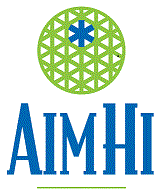CMS Newsroom Source | Comments Courtesy of Matt Zavadsky
This is an interesting waiver that directly references Mobile Integrated Healthcare Paramedics as an eligible part of the care team.
EMS agencies providing MIH services should consult with their local hospitals to see if this is a program the hospital may be applying for.
Tip of the hat to Chris Crowley from West Health for assuring we were aware of this in the waiver.
Additional webinars will be forthcoming...
-------------------------
CMS Announces Comprehensive Strategy to Enhance Hospital Capacity Amid COVID-19 Surge
Nov 25, 2020

https://www.cms.gov/newsroom/press-releases/cms-announces-comprehensive-strategy-enhance-hospital-capacity-amid-covid-19-surge
Today, the Centers for Medicare & Medicaid Services (CMS) outlined unprecedented comprehensive steps to increase the capacity of the American health care system to provide care to patients outside a traditional hospital setting amid a rising number of coronavirus disease 2019 (COVID-19) hospitalizations across the country. These flexibilities include allowances for safe hospital care for eligible patients in their homes and updated staffing flexibility designed to allow ambulatory surgical centers (ASCs) to provide greater inpatient care when needed. Building on CMS’s previous actions to expand the availability of telehealth across the nation, these actions are aimed at allowing health care services to be provided outside a hospital setting while maintaining capacity to continue critical non-COVID-19 care, allowing hospitals to focus on the increased need for care stemming from public health emergency (PHE).
“We’re at a new level of crisis response with COVID-19 and CMS is leveraging the latest innovations and technology to help health care systems that are facing significant challenges to increase their capacity to make sure patients get the care they need,” said CMS Administrator Seema Verma. “With new areas across the country experiencing significant challenges to the capacity of their health care systems, our job is to make sure that CMS regulations are not standing in the way of patient care for COVID-19 and beyond.”
Acute Hospital Care at Home
In March 2020, CMS announced the Hospitals Without Walls program, which provides broad regulatory flexibility that allowed hospitals to provide services in locations beyond their existing walls. Today, CMS is expanding on this effort by executing an innovative Acute Hospital Care At Home program, providing eligible hospitals with unprecedented regulatory flexibilities to treat eligible patients in their homes. This program was developed to support models of at-home hospital care throughout the country that have seen prior success in several leading hospital institutions and networks, and reported in academic journals, including a major study funded by a Healthcare Innovation Award from the Center for Medicare and Medicaid Innovation (CMMI).
The development of this program was informed by extensive consultation with both academic and private sector industry leaders to ensure appropriate safeguards are in place to protect patients, and at no point will patient safety be compromised. CMS believes that treatment for more than 60 different acute conditions, such as asthma, congestive heart failure, pneumonia and chronic obstructive pulmonary disease (COPD) care, can be treated appropriately and safely in home settings with proper monitoring and treatment protocols.
Participating hospitals will be required to have appropriate screening protocols before care at home begins to assess both medical and non-medical factors, including working utilities, assessment of physical barriers and screenings for domestic violence concerns. Beneficiaries will only be admitted from emergency departments and inpatient hospital beds, and an in-person physician evaluation is required prior to starting care at home. A registered nurse will evaluate each patient once daily either in person or remotely, and two in-person visits will occur daily by either registered nurses or mobile integrated health paramedics, based on the patient’s nursing plan and hospital policies.
CMS anticipates patients may value the ability to spend time with family and caregivers at home without the visitation restrictions that exist in traditional hospital settings. Additionally, patients and their families not diagnosed with COVID-19 may prefer to receive care in their homes if local hospitals are seeing a larger number of patients with COVID-19. It is the patient’s choice to receive these services in the home or the traditional hospital setting and patients who do not wish to receive them in the home will not be required to.
The program clearly differentiates the delivery of acute hospital care at home from more traditional home health services. While home health care provides important skilled nursing and other skilled care services, Acute Hospital Care at Home is for beneficiaries who require acute inpatient admission to a hospital and who require at least daily rounding by a physician and a medical team monitoring their care needs on an ongoing basis.
To support these efforts, CMS has launched an online portal https://qualitynet.cms.gov/acute-hospital-care-at-home to streamline the waiver request process and allow hospitals and healthcare systems to submit the necessary information to ensure they meet the program’s criteria to participate. CMS will also closely monitor the program to safeguard beneficiaries by requiring hospitals to report quality and safety data to CMS on a frequency that is based on their prior experience with the Hospital At Home model.
Six health systems with extensive experience providing acute hospital care at home are being approved today for the new waivers and include Brigham and Women’s Hospital (Massachusetts); Huntsman Cancer Institute (Utah); Massachusetts General Hospital (Massachusetts); Mount Sinai Health System (New York City); Presbyterian Healthcare Services (New Mexico); and UnityPoint Health (Iowa). This immediately expands the at-home care options for Medicare beneficiaries in the regions served by these organizations. CMS has been in discussions with other health care systems and expects new applications to be submitted.
To view the Acute Hospital Care At Home initiative and application, please visit: CMS’: https://qualitynet.cms.gov/acute-hospital-care-at-home
To view comments from health systems participating in the Acute Hospital Care at Home, please visit: https://www.cms.gov/files/document/what-are-they-saying-hospital-capacity.pdf
Link to FAQs:
https://www.cms.gov/files/document/covid-hospital-without-walls-faqs-ascs.pdf
https://www.cms.gov/files/document/covid-acute-hospital-care-home-faqs.pdf


